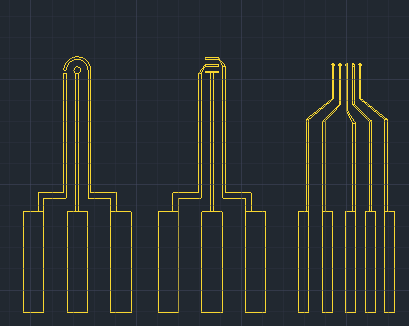Electrode Design
Microelectrodes are specially patterned electrodes with very small tip diameters (less than 1 µm) that enable in-vitro electrochemical measurements in living tissues. Other applications using microelectrodes include measuring substance concentrations and determining pH levels.
Electrode material selection can determine biocompatibility, conductivity, and corrosion. An ideal electrode material should exhibit good mechanical and thermal stability to prevent corrosion, high electrical conductivity, and uniform current distribution.
Metal microelectrodes can be used to mediate electrical current which is particularly useful in cyclic voltammetry applications. These electrodes provide mechanical strength, enhanced durability, and allow action potentials to be recorded in human tissues. An alternative to metal microelectrodes is glass pipette microelectrodes, that measure liquid junction potential. However, glass microelectrodes are often more inaccurate due to tip potential, which varies when placed in differing solutions.
Recently, microelectrodes made with soft substrates have been used to develop artificial prosthetics that require electrical conversions, specifically when fabricating neuro-prosthetics. Soft substrate materials have been shown to provide enhanced biocompatibility and minimized damage.
Platinum and gold represent prominent electrode materials. Platinum offers a low impedance and high charge storage capacity. A high impedance can create large amounts of electrical voltage which leads to uncontrollable electrochemical reactions. Whereas low impedance allows small extracellular signals to be observed and recorded while avoiding cellular damage. Gold is often a more viable electrode material due to a higher stability of capacitive behavior which leads to a more consistent electrical resistance.
Platypus Technologies offers specific electrode designs that can be used for a variety of research applications. Each design is specially tailored to provide accurate electrochemical based results. Custom electrode designs are also available upon request.
Disk Electrodes
Platypus Technologies disk electrodes consist of three-probes in which the center probe serves as the working electrode and the other two surrounding probes act as the reference electrodes. Disk electrodes can be rotated to create a flux that helps to control diffusion layer thickness. This mechanism is used to quantify the kinetics of electrochemical processes. These electrodes can also be useful in experiments involving solutions and droplets evaluated with electrochemical impedance spectroscopy (EIS) and cyclic voltammetry.
Three-Probe Electrodes
Our three-probe electrodes are patterned with gold to provide a high conductivity. This electrode design can be used in testing chemical sensors, transistors (FETs, HEMTs, BioFETs), and biosensors.
Three-probe electrodes are also used in blood glucose monitoring which is done through glucose sensors that provide electrochemical signals. With working, counter and reference electrodes current flow is monitored with amperometry.
Five-Probe Electrodes
Our five-probe electrodes are primarily useful in measuring sheet resistance. Sheet resistance provides a value of resistivity which depends on the number of impurities (implanted or diffused) and layer thickness. By utilizing metal electrodes, probes can be oriented in any direction as opposed to being restricted to perpendicular or parallel contact. Different types of materials can be tested while utilizing our five-probe electrodes such as biological tissues, 2D materials, nanomaterials, polymers, and other advanced materials.

Platypus Technologies provides custom solutions for fabrication of microelectrodes utilized for chemical and biochemical sensor applications. We also provide a custom metal coating service using e-beam vapor deposition. To find out more, get in touch with us at